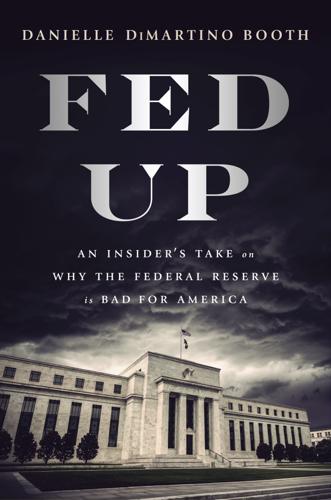
Fed Up: An Insider's Take on Why the Federal Reserve Is Bad for America
by
Danielle Dimartino Booth
Published 14 Feb 2017
CHAPTER 3: Saint Greenspan CHAPTER 4: Inside the Black Box CHAPTER 5: The First Tremors CHAPTER 6: Front-running the Fed CHAPTER 7: The Maverick CHAPTER 8: The Inner Sanctum CHAPTER 9: “Luddite!” CHAPTER 10: Helpless CHAPTER 11: Slapped in the Face by the Invisible Hand CHAPTER 12: Heads Must Roll CHAPTER 13: Breaking the Buck CHAPTER 14: Breaching the Zero Bound CHAPTER 15: The Walking Dead CHAPTER 16: Dr. Ben Pulls a Bait and Switch CHAPTER 17: A Turning Point CHAPTER 18: Insider Trading? CHAPTER 19: Spinning Fedwire CHAPTER 20: The Taper Tantrum CHAPTER 21: The New Sheriff in Town CHAPTER 22: Culture Shock ACKNOWLEDGMENTS NOTES INDEX CHAPTER 1 “Groupstink” Never in the field of monetary policy was so much gained by so few at the expense of so many.
…
Eventually the bailout would total $184.6 billion, with the Fed taking a 92 percent government stake. Paulson informed Willumstad that he had to go. Another head rolled down Wall Street, coming to rest alongside that of Dick Fuld. Bernanke and crew didn’t have even a moment to catch their breath when Lehman’s collapse ricocheted and blindsided them again. CHAPTER 13 Breaking the Buck FED STATEMENT WORD COUNT: 420 EFFECTIVE FED FUNDS RATE: 0.08% 10-YR TREASURY RATE: 1.97% FED BANKS TOTAL ASSETS: $2,919.55B DATE: 1/1/2012 Will capitalist economies operate at full employment in the absence of routine intervention? Certainly not. Do policymakers have the knowledge and ability to improve macroeconomic outcomes rather than make matters worse?
…
On September 17, the Reserve Primary Fund was forced to lower its share value to 97 cents because of exposure to Lehman’s commercial paper. No other MMF had broken the buck since 1994, in the aftermath of the bankruptcy of Orange County, California. The news was “really, really bad,” said Don Phillips, one of the founders of Morningstar. “You talk about Lehman and Merrill having been stellar institutions, but ‘breaking the buck’ is sacred territory.” And scores of other MMFs, a $3.6 trillion industry, had lethal exposure to Lehman commercial paper. Lehman and AIG had played with fire and their shareholders got burned. But what about Aunt Mabel, who slept well at night knowing her savings were safely invested in an MMF, as risk free as a Treasury bill?
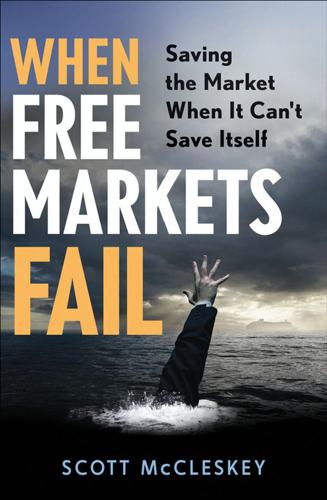
When Free Markets Fail: Saving the Market When It Can't Save Itself (Wiley Corporate F&A)
by
Scott McCleskey
Published 10 Mar 2011
They are constructed to ensure that the share price stays stable at $1 per share: If you invest $100,000, you know you will get back $100,000 when you need it, plus whatever interest has accrued. If the price were to fall below a dollar per share—‘‘breaking the buck,’’ in financial parlance—the depositor would lose some of its invested principle. For this reason, breaking the buck was the ultimate taboo and it had happened only once since the early 1970s—until Lehman Brothers went belly-up. What happened then illustrates why and how these funds can transmit and amplify financial shock and turn one firm’s failure into a potential economic disaster.
…
Writing down such a large chunk of its assets meant that its net asset value (price) fell below $1 per share. Now, Lehman Brothers’ problem became a problem for any firm that held its money in Reserve Primary Fund. Moreover, since no one knew which other money market funds held Lehman repos, it was anyone’s guess whether another fund would break the buck, by how much, or when. The prudent thing for a company treasurer to do in such a situation is to start pulling the company’s money out of money market funds at least until the situation becomes clear. Indeed, by the end of the week more than $200 billion had been withdrawn from money market C01 06/16/2010 11:13:51 Page 9 The Case for Government Intervention & 9 funds—some $40 billion more than the estimated cost of the entire savings and loan crisis.4 If enough companies pull out of a fund, it has to sell its holdings in order to pay cash to the customers pulling their funds out, and this could create a downward spiral on the assets of that fund (causing it to break the buck).
…
Indeed, by the end of the week more than $200 billion had been withdrawn from money market C01 06/16/2010 11:13:51 Page 9 The Case for Government Intervention & 9 funds—some $40 billion more than the estimated cost of the entire savings and loan crisis.4 If enough companies pull out of a fund, it has to sell its holdings in order to pay cash to the customers pulling their funds out, and this could create a downward spiral on the assets of that fund (causing it to break the buck). This can also cause a run on the assets being sold by the failing fund into the market, and this in turn could cause the panic to spread to other funds holding the assets being dumped into the market at ever lower prices. In this scenario, money market funds become the conduit though which the crisis spreads far beyond those firms directly exposed to the failing bank’s obligations.
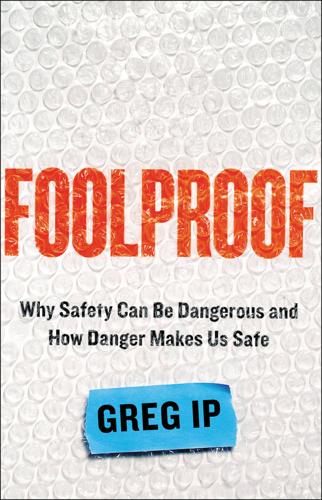
Foolproof: Why Safety Can Be Dangerous and How Danger Makes Us Safe
by
Greg Ip
Published 12 Oct 2015
But by the end of Tuesday, with Lehman debt now priced at zero cents on the dollar, they concluded they could not, and announced that Reserve’s shares were now priced at 97 cents instead of one dollar. Federal Reserve and Treasury officials had spent the weekend trying to imagine and prepare for every collateral effect of a Lehman bankruptcy. One thing they apparently did not consider was that a money market fund might break the buck. That announcement arguably sowed as much panic as Lehman’s bankruptcy itself. Within a week, investors yanked a total of $349 billion from almost every money market fund not invested solely in Treasury bills, regardless of whether it had exposure to Lehman. Some thirty-six of the one hundred largest U.S. prime money market funds were eventually supported.
…
Lehman’s paper retained its top rating from Moody’s and Standard & Poor’s until the day of its bankruptcy; the Securities and Exchange Commission had overseen Lehman through a special oversight program, with staffers on site; and the SEC’s chairman had pronounced Lehman’s capital sufficient. But many other investors had been skeptical of such assertions and avoided Lehman paper; arguably, Bent should have done the same. Still, there were at least two other assumptions grounded in decades of experience that suggest why Lehman’s failure and Reserve’s breaking the buck came as such shocks. The first was that Lehman would not be allowed to fail. Indeed, in the prior four decades, no financial firm even close to Lehman’s size or importance had been allowed to collapse. As we saw in Chapter 2, when the collapse of a big bank threatened the economy, Volcker worked hard to prevent it, lending to Mexico and leading the bailout of Continental Illinois.
…
“We could get our cash any day that we would need it,” explained one investor in Reserve. “And it gave us safety because the money market fund was a dollar in, you get your dollar out.” Of course, these investments weren’t bank deposits. Funds were not legally obligated to maintain the dollar per share value. But in practice, the reputational damage of breaking the buck was so great that sponsors—the management companies who ran the funds—almost always put their own capital in rather than allow it to happen. It later emerged that, between 1972 and the lead-up to the crisis, there had been 146 instances of a fund sponsor intervening to preserve the dollar per share value of a money market fund.

In FED We Trust: Ben Bernanke's War on the Great Panic
by
David Wessel
Published 3 Aug 2009
“Our sense and our intelligence was, there was no hope of getting something like this, given the very short legislative schedule, given the complexity of such a thing, given the lack of appetite for such a thing. So we didn’t make a serious attempt to get Congress to pass anything,” he explained. But then, second-guessing himself for a moment, he added, “If we had, we wouldn’t have gotten it … but at least we would have been able to say we tried.” BREAKING THE BUCK The turmoil in the financial markets during the week of September 15 didn’t revolve only around newfangled financial instruments, cross-border sophisticated bets, or the collapse of major financial institutions. In fact, the biggest surprise of Lehman’s collapse came from money market funds, the $1-a-share mutual funds that Americans had come to consider as safe as bank accounts.
…
“The Fed officials cautioned the participants on the call not to be overly optimistic,” the minutes of the Reserve Fund’s board record drily. Around 3:45, the Fed said, “No.” At 4:15 P.M., the fund issued a press release. The Lehman paper in its portfolio was worthless and the Fund’s shares were worth not $1, but only 97 cents: breaking the buck. The news triggered a run that spread through the $3.4 trillion industry. (Bruce Bent II and his father, Bruce Bent Sr., were later accused of fraud by the SEC, which said they had misled investors, credit rating agencies, and the money market fund’s trustees in failing to disclose “key material facts” about the fund’s vulnerability when Lehman collapsed, among other transgressions.
…
Scores of brand-name industrial companies — General Electric, Caterpillar, Dow Chemical — relied on the money market funds for their short-term borrowing, often issuing the funds IOUs called commercial paper that were backed only by the companies’ promise to pay. The Fed and the Treasury decided that to avoid a stampede out of money market funds, they had to find a way to assure consumers that the Reserve Primary Fund wouldn’t be followed by scores of other money market funds breaking the buck. At the Fed, Don Kohn took charge of the response while Bernanke went to Capitol Hill and Warsh to New York. At the Treasury, the job fell to David Nason, the assistant secretary for financial institutions. Nason recently had recused himself to look for a job. After AIG imploded, he dropped the job hunt and returned to work.
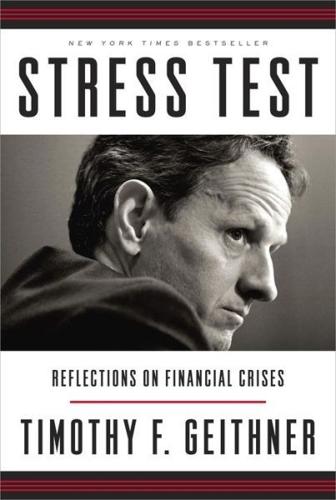
Stress Test: Reflections on Financial Crises
by
Timothy F. Geithner
Published 11 May 2014
The Lehman paper made up only about 1 percent of the $62 billion fund, but since the fund had no capital buffers to absorb losses, that was enough to create the stench of death; by that evening, the flood of requests for redemptions amounted to nearly two-thirds of the fund. The Reserve Fund asked the New York Fed for help to avoid breaking the buck, but my team said no. We didn’t think we could stop the run, and agreeing to their request would have amounted to an implied backstop for the entire $3.5 trillion money market industry. The Fed didn’t have the legal authority to guarantee money market funds and protect their investors from losses. “Ridiculous request,” Don Kohn agreed in an email. Still, the break-the-buck incident had cast suspicion on all prime money market funds. Institutional investors would withdraw more than $300 billion over the next week.
…
But money market funds had provided much of the financing for those other sources of systemic risk. Now we saw that these funds could be a threat. On an FOMC videoconference the evening after the Countrywide drama, the new head of my markets division, Bill Dudley, warned that mortgage-related losses “could conceivably cause some funds to ‘break the buck,’ ” meaning they wouldn’t be able to redeem deposits at the fixed one-dollar-per-share value their investors took for granted. “In the worst case, this could even result in a run from these funds,” Dudley said. Even in those early days of the crisis, the financial system looked much more vulnerable to runs than we had appreciated.
…
Meanwhile, U.S. depositors were withdrawing about $2 billion a day from WaMu, twice as much as they had withdrawn after the run on IndyMac. The “TED spread,” a measuring stick for fear in the banking system, was about to surpass the record set after the 1987 stock market crash. Tuesday’s most chilling development outside AIG was a money market fund “breaking the buck,” which meant it could no longer promise investors 100 cents on the dollar. Money market funds were widely viewed as virtually indistinguishable from insured bank deposits, as similarly safe vehicles for storing cash with slightly better interest rates. But many money market funds had invested in commercial paper and other instruments that turned out to be riskier than they had thought.
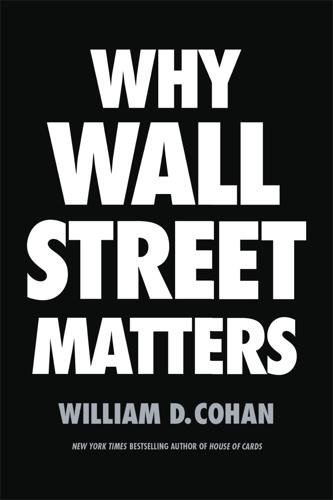
Why Wall Street Matters
by
William D. Cohan
Published 27 Feb 2017
The Reserve Fund generated those slightly higher returns by investing in something that seemed to be rated AAA—the AAA tranches of securitizations, the funky and creative securities created by Lew Ranieri—that turned out not to be really AAA after all (as we all know). Understandably, the Federal Reserve doesn’t want that to happen again, hence the new rules about money-market funds that took effect last year. The problem, as usual, is not the honorable goal of trying to prevent a money-market fund from ever again breaking the buck; the problem is the unintended consequences of trying to make sure that doesn’t happen. Once upon a time, Alan Greenspan, another former Federal Reserve Board chairman, spoke about the Fed’s being an organization that set monetary policy with a minor regulatory function attached to it. Today, the Fed’s monetary function is the minor appendage to its growing regulatory juggernaut.
…
One man, Daniel Tarullo, has become the embodiment of the Fed’s new focus; in the process, he has become the most feared and powerful Washington banking regulator. He is also unknown to the American people. (That needs to change; a bright light needs to be focused on him and his reforms.) Tarullo is the driving force at the Fed seeking to make sure things like “breaking the buck” never happen again. Tarullo has the power to make that happen, because he is in charge of regulating the big banks as chairman of the Federal Financial Institutions Examination Council (a mouthful for sure). But Tarullo’s mission also shows how far regulators are going these days to eliminate risk inside Wall Street’s biggest banks, and that will have unintended consequences—like higher rates for borrowed money—for the rest of us.
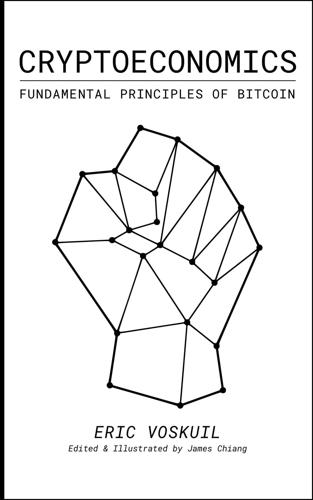
Cryptoeconomics: Fundamental Principles of Bitcoin
by
Eric Voskuil
,
James Chiang
and
Amir Taaki
Published 28 Feb 2020
The advantage of the MMA is that its units are more fungible [540] , though still discounted against money. The advantage of the MMF is that losses are evenly spread. It is not surprising therefore that MMAs are typically insured by the taxpayer, more tightly regulated by the state, and accounted for as bank credit. It is rare for a MMF to “break the buck ” [541] but of course it can and does happen. Bank failures also happen but are hidden by taxpayer insurance. Bank credit is not truly fungible. This can be seen in everyday use of credit cards and cheques. There is a material risk of failure to settle associated with each. While this risk is generally attributed to the account holder (e.g. in the case of a MMA), it is a non-distinction to the person accepting the credit.
…
This aspect distinguishes the bank from an investment fund. The money substitute may be either a demand deposit [673] or a money market [674] . The distinction is in the allocation of insufficient reserve (negative rate of return), with the former being “first come, first served ” [675] and the latter “breaking the buck ” [676] . The lack of state intervention is the common concept of free banking [677] , where there is no statutory control [678] , state insurance [679] , discount capital [680] , or seigniorage [681] . The bank uses commodity money [682] unless otherwise specified, which simplifies calculations by eliminating [683] the need to offset price inflation [684] or price deflation [685] .
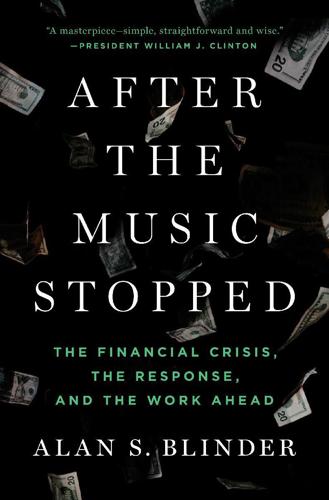
After the Music Stopped: The Financial Crisis, the Response, and the Work Ahead
by
Alan S. Blinder
Published 24 Jan 2013
Within just two days after Lehman declared bankruptcy, the Reserve was flooded with redemption requests amounting to about half the fund’s balances. After the close of business on Tuesday, September 16, management announced that its holdings of Lehman paper were worthless and that it was therefore forced to “break the buck”; that is, to redeem shares at less than their $1 face value. After a number of investors got out at par, and after other CP prices fell in the panicky environment, the remaining shares of the Reserve Primary Fund were worth only $0.97. A 3 percent loss doesn’t sound like much compared with everything else that was happening at the time.
…
The share price of a money fund never varied; it was always exactly $1, which removed any risk of capital gains or losses. This neat trick was accomplished originally by investing the funds’ assets in money-market instruments that hardly ever fluctuated in value, such as short-term U.S. Treasury bills. As time went by, and no retail money fund ever suffered losses large enough to force it to “break the buck,” commercial paper and other short-term instruments came to be viewed as safe enough to be included in money funds’ portfolios. And since CP paid a bit more than Treasury bills, that boosted the funds’ yields. Investors, for their part, came to consider money fund balances just as safe as bank accounts, even though the former carried no FDIC guarantees.
…
See also Morgan Stanley Maiden Lane, 107n Making Home Affordable, 334–37 Marketable debt, federal guarantee for, 161–62 Mayer, Chris, 326 Medicare/Medicaid, and federal budget deficit, 390, 398 Mellon, Andrew, 353 Meltzer, Allan, 349 Merrill Lynch Bank of America purchase of, 122, 129, 150, 152–53, 164–65 collateralized debt obligations (CDOs), 151–52 financial decline of, 151–52 leverage ratio of, 52 mortgage-related holdings, 89 Orange County derivatives failure, 60 post-collapse status, 52, 153 TARP funds for, 201 Mezzanine tranche, 74 Minsky, Hyman, 64, 434 Minsky moment, 64 Mishkin, Frederic “Rick,” 92, 105 Monetary policy recession, fighting with, 350 special tactics. See Unconventional monetary policy (UMP) Money market funds break the buck redemptions, 143–44 features of, 143–44 guarantees from Treasury, 145–47 no FDIC guarantees, 144 runs from (2008), 142–49 Monti, Mario, 424–25, 428 Moody’s, 400 rating failures, 79–81 Moral hazard and bailouts, 113–14, 125, 138–39 and European Central Bank (ECB), 423 meaning, financial scenario for, 108–9 past, learning from, 431–32 Washington Mutual lesson, 156–57 Morgan Stanley as bank holding company, 129, 154 as derivatives dealer, 61 financial decline of, 153–54 hedge fund run, 153 leverage ratio of, 52 PDCF loan to, 153–54 post-collapse reorganization, 52 TARP funds for, 201 Morgenson, Gretchen, 117 Mortgage-backed securities (MBS).
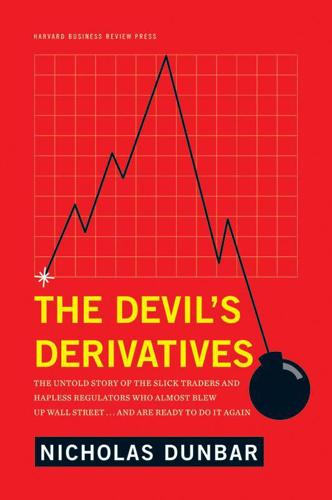
The Devil's Derivatives: The Untold Story of the Slick Traders and Hapless Regulators Who Almost Blew Up Wall Street . . . And Are Ready to Do It Again
by
Nicholas Dunbar
Published 11 Jul 2011
Money market funds responded that they didn’t need this protection because they weren’t “borrowing short and lending long,” as banks did—IOUs and repos were only short-term investments, not long-term loans. That distinction let them build up the confidence of their customers with a myth worthy of the Wizard of Oz: “We never break the buck.” In other words, for every dollar you invest with us, you will get at least a dollar back. This was an astounding claim, in part because the contractual small print on mutual funds made it clear that the redemption value of funds depended on the price that its assets could be sold for in the market: there was no guarantee your cash would be returned.
…
It was only if you jumped off planet Derivative and back onto planet Earth that you saw the chaos and devastation caused by Lehman’s collapse. On planet Earth, getting eight and a half cents on the dollar was a disaster for investors across the world. On planet Earth was the Reserve Primary Fund, whose holding of Lehman IOUs caused it to “break the buck,” triggering a run on money market mutual funds. Clearly, the New York Fed’s view of what was an efficient free market was too narrow. In fact, it took only twenty-four hours for this regulatory confidence to evaporate. The trouble had been brewing a week before Lehman’s bankruptcy—New York Fed officials had learned that Moody’s and Standard & Poor’s were about to downgrade AIG to a single-A rating, which would trigger a payment of $13 billion of additional default swap collateral.
…
Treasury new powers to take over mortgage agencies Lehman Brothers tries to raise capital from Korea Development Bank, but talks go nowhere (September 8) Fannie Mae and Freddie Mac placed into conservatorship by Treasury (September 12) Counterparties lose confidence in Lehman, prompting a weekend of attempted deal making at the New York Fed Credit ratings agencies warn of imminent downgrade of AIG; New York Fed holds discussions concurrent with Lehman talks (September 14) U.K. government declines to facilitate takeover of Lehman by Barclays; Bank of America takes over Merrill Lynch (September 15) Lehman files for bankruptcy (September 16) New York Fed provides an emergency $85 billion loan facility to save AIG from bankruptcy triggered by collateral calls, and appoints a new CEO at AIG Reserve Primary Fund, invested in Lehman, “breaks the buck,” forcing the Fed to support money market funds (September 24) Goldman Sachs and Morgan Stanley receive new equity investments and become bank holding companies, formalizing their “too big to fail” status FDIC seizes Washington Mutual (September 29) Congress fails to pass TARP, and the Dow falls 770 points (October 3) Revised TARP bill passes Congress (October 6) Wells Fargo acquires Wachovia Germany, Belgium, and The Netherlands announce bailouts for problem banks (October 8) Federal Reserve and international central banks impose coordinated emergency interest rate cuts (October 10) OIS-Libor spread peaks at 364 basis points: interbank lending has broken down (October 12) Royal Bank of Scotland receives emergency bailout from U.K. government, and CEO Sir Fred Goodwin is ousted (October 14) U.S. government announces injection of $250 billion of TARP capital into U.S. banks New York Fed creates two special companies to buy AIGFP-related CDOs and securities lending-related mortgage bonds, paying counterparties such as Goldman 100 percent of market value (October 3) Avoiding the need for U.K. government funds, Barclays raises £7 billion of capital from Middle Eastern investors (November) President Obama elected; Geithner tapped as Treasury Secretary HSH Nordbank receives German government bailout (December) Irish government bails out banks Citigroup receives an additional $20 billion TARP bailout and $300 billion of debt guarantees from the U.S. government 2009 (January) U.K. government announces additional bailout of Royal Bank of Scotland and other banks President Obama inaugurated (April) Case-Shiller house price index reaches a trough 2010 (May) Greece is frozen out of bond markets, leading to an EU and IMF bailout (July) Goldman pays $550 million to settle SEC lawsuit over Abacus 2007 AC-1 Dodd-Frank bill signed into law (September) Basel III banking rules finalized (October) “Robo-signing” foreclosure scandal leads to wave of lawsuits against banks (November) Market confidence in Ireland evaporates, leading to an IMF/EU bailout in December Notes Chapter One 1.
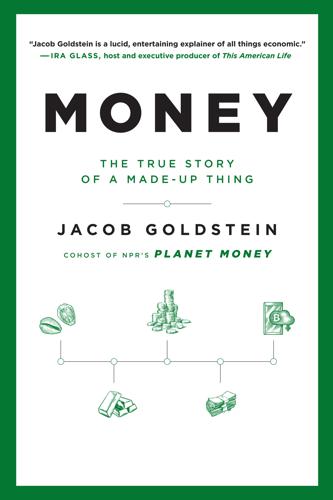
Money: The True Story of a Made-Up Thing
by
Jacob Goldstein
Published 14 Aug 2020
In September 2008, approximately everybody who had been parking their money with Lehman decided they wanted it back. Lehman didn’t have the money. It had a bunch of mortgage-backed bonds that nobody wanted to buy. Early in the morning on Monday, September 15, Lehman declared bankruptcy. Bruce Bent Breaks the Buck Three days before Lehman filed for bankruptcy, the Wall Street Journal ran a small story, deep inside the paper, about an obscure regulatory question in the money-market fund industry. The story quoted Bruce Bent, inventor of the money-market fund, arguing once again that other money fund managers were taking too many risks.
…
Despite the standard warnings that the fund might lose money, people did not think of their money in the fund as an investment. They thought of their money in the fund as their money. You put in a dollar, you get back a dollar whenever you want it. If the fund were to lose 1 percent of its value, investors wouldn’t get all their money back. This, for a money-market fund, is a disaster known as “breaking the buck.” The savvy institutional investors who knew what was going on rushed to pull their money out of the Reserve Fund. By midmorning, just hours after Lehman declared bankruptcy, investors had redeemed $10 billion—ten times as much as in a typical morning. Like a bank, the Fund didn’t have that cash on hand.
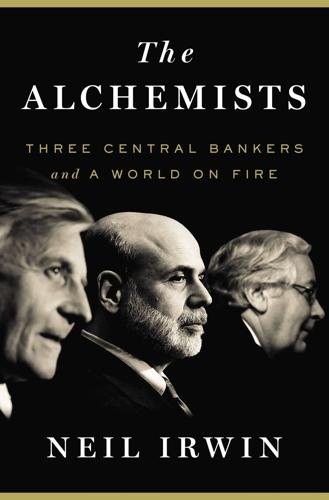
The Alchemists: Three Central Bankers and a World on Fire
by
Neil Irwin
Published 4 Apr 2013
And the week of September 14, 2008, was one of the worst weeks in the history of finance to try to sell commercial paper and other short-term investments. The Reserve Primary Fund may not have been a bank, but it was experiencing a run on the bank nonetheless. It announced Tuesday evening that it would have to “break the buck,” meaning that shares in the fund normally worth $1 would in fact be worth only 97 cents. In response, investors started pulling their money out of other money market funds, making $169 billion in withdrawals the very next day. A vicious cycle was setting in: As investors yanked their money from the funds, the funds were forced to dump commercial paper into the market to free up cash, causing their value to fall further, creating more losses.
…
As the New York Fed’s market monitoring staffers made their daily calls to sources on the trading desks of Wall Street and beyond, and more senior Fed officials sounded out old contacts of their own, they were told of a situation that seemed on the verge of spinning out of control: More funds would break the buck, putting $3.8 trillion of Americans’ savings at risk. And all that money being pulled out of mutual funds meant less cash available for banks, as well as companies that fund their operations with commercial paper. If the money market funds went, so would the solvency of banks that had weathered the collapse of Lehman and the near collapse of AIG, along with the ability of much of corporate America to make its payroll.
…
Morgan Chase to mutual funds run by household-name companies such as Janus and Oppenheimer. To satisfy the Fed’s lawyers, the program could accept commercial paper backed only by specific assets, such as credit card loans due. But with a buyer in the market for even just a subset of the securities they owned, the money market funds could raise enough money to avoid breaking the buck. It took a little longer to come up with the next mode of attack. The Commercial Paper Funding Facility, announced on October 7, focused on the other side of the same problem, the difficulty companies were having selling their commercial paper, due in large part to the money market funds not being available as a buyer.
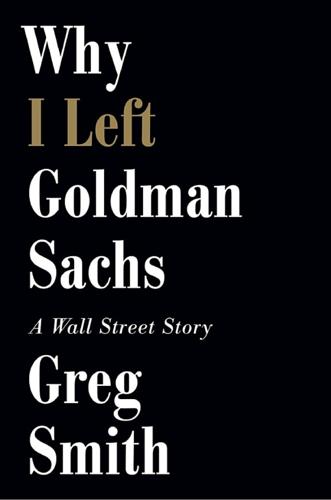
Why I Left Goldman Sachs: A Wall Street Story
by
Greg Smith
Published 21 Oct 2012
The Dow lost just over 500 points on Monday the fifteenth, the biggest single drop since 9/11. Money market funds—the safest investment around, with minuscule rates of return—began notching negative returns. If you put your funds into a money market at that point, you would have gotten less back than if you’d stuck them in a mattress. The term for this is breaking the buck. No one thought this could ever happen. It happened. With three investment banks gone by Monday, September 15, both our stock and Morgan Stanley’s got pummeled. On Tuesday of that week, the stock of AIG, the world’s biggest insurance company, dropped 60 percent, after already having dropped more than 95 percent from its fifty-two-week high of $70.13.
…
It was Sunday evening, September 14, and we were all in the office waiting to see if Lehman would go under. I thought, What kind of hardened motherfucker puts himself through this during the biggest financial crisis since the Great Depression? Every day for a week—through Lehman, Merrill, AIG, and “breaking the buck”—Conti took delivery of “six 100% organic vegetable and fruit juices” from the BluePrintCleanse company, and every day he dutifully drank all six bottles. He didn’t have one bite of solid food for seven days. This did not help his mood. Mr. Cleanse was Brooklyn-born and raised, a former college football player, equal parts intensity and passivity.
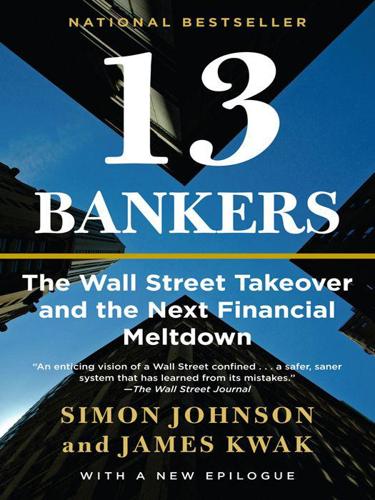
13 Bankers: The Wall Street Takeover and the Next Financial Meltdown
by
Simon Johnson
and
James Kwak
Published 29 Mar 2010
.* On Tuesday, with the collateral damage caused by Lehman’s failure beginning to spread, the Fed stepped in with an $85 billion credit line to keep AIG afloat, fearing that if the insurer defaulted on its hundreds of billions of dollars in credit default swaps, its counterparties would suffer devastating losses—or, at the least, fear of those losses would cause the financial markets to grind to a halt. Also on Tuesday, the Reserve Primary Fund, one of the largest money market funds, announced that it would “break the buck”; because of losses on Lehman debt, it could not return one dollar for each dollar put in by investors. As a result, money flooded out of money market funds, forcing Treasury to create a new program to provide insurance for those funds. The flight from money market funds dried up demand for the commercial paper used by corporations to manage their cash, raising the specter that major corporations might not be able to make payroll.
…
Certain financial institutions are so big, or so interconnected, or otherwise so important to the financial system that they cannot be allowed to go into an uncontrolled bankruptcy; defaulting on their obligations will create significant losses for other financial institutions, at a minimum sowing chaos in the markets and potentially triggering a domino effect that causes the entire system to come crashing down. The bankruptcy of Lehman Brothers in September 2008 accelerated the collapse of American International Group, forcing it into the arms of the Federal Reserve; Lehman’s failure also forced the Reserve Primary Fund to “break the buck,” causing a sudden loss of confidence in all money market funds; in turn the flood of money out of money market funds caused the commercial paper market to freeze, endangering the ability of many corporations to operate on a day-to-day basis. The failure of Lehman also caused large cash outflows from the remaining stand-alone investment banks, Goldman Sachs and Morgan Stanley.
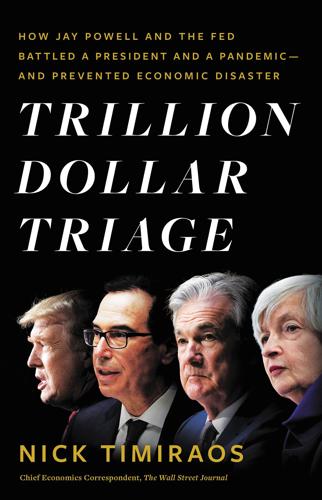
Trillion Dollar Triage: How Jay Powell and the Fed Battled a President and a Pandemic---And Prevented Economic Disaster
by
Nick Timiraos
Published 1 Mar 2022
But the costs to borrow for even the best names in business were rising. Goldman, for example, raised $2.5 billion in ten-year debt with an interest rate 3 percentage points above a government rate that Tuesday. By contrast, one month earlier it had raised $2 billion in ten-year money at a rate just 0.95 percentage points above a government rate.9 Breaking the buck, déjà vu Despite the rallies in markets and investor optimism, worrying trends were growing beneath the surface. Treasury yields began rising sharply on Tuesday. Were investors selling US Treasury debt because they worried an explosion in government borrowing would send rates even higher? Possibly.
…
Holdings by those investors had fallen 12 percent, or $80 billion, since March 4. Money funds had seen larger outflows in past periods, but this redemption wave was notable for its speed and lack of warning. Soon Rosengren was getting calls from many of the large mutual funds, saying they were at risk of runs. “They were worried that they were going to break the buck,” he said.10 Rosengren began sending flares to officials at the Fed board as well as the New York Fed, and he pulled together veterans from the 2008 crisis to design a newer version of their initial rescue operation. “The question was did we think we could skate through? And did we really want to be bailing out prime money-market funds again?”
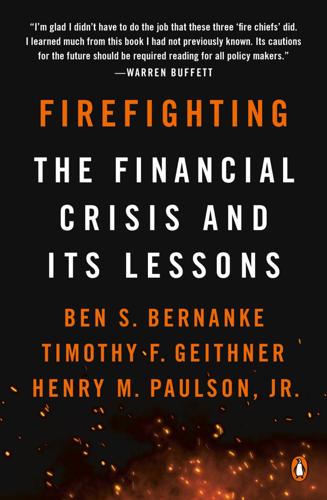
Firefighting
by
Ben S. Bernanke
,
Timothy F. Geithner
and
Henry M. Paulson, Jr.
Published 16 Apr 2019
It was still getting worse, and a new disaster erupted on Tuesday while we were finalizing the terms of our support for AIG. The Reserve Primary Fund, a money market fund that had invested heavily in Lehman’s commercial paper, announced it could no longer pay its investors 100 cents on the dollar and was halting redemptions. Investors afraid that other money market funds would also “break the buck” and freeze their cash scrambled to pull $230 billion out of the industry that week, a scary run on quasi-banks that had operated without insurance for their quasi-deposits. Meanwhile, as money funds pulled back from risk to reassure their investors, they bought even less commercial paper and lent even less in the repo markets, intensifying the liquidity crisis for banks and nonbanks.
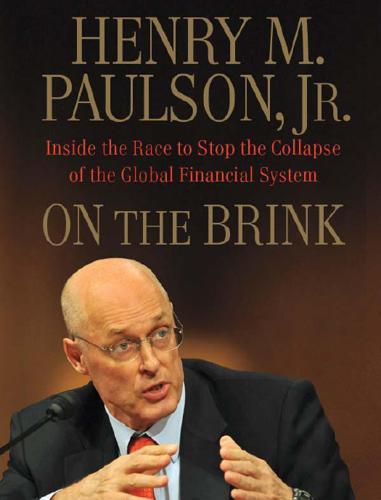
On the Brink: Inside the Race to Stop the Collapse of the Global Financial System
by
Henry M. Paulson
Published 15 Sep 2010
“But there is no liquidity in the markets. The commercial paper market is frozen.” Bill proceeded to tell me about problems he was having with his money market funds. Because the market for commercial paper had seized up, the funds were under real pressure from withdrawals, and he was looking for ways to avoid breaking the buck. He was working on a way the parent company could support the funds financially without taking the obligation on its balance sheet. But this solution required accounting relief. He’d already called the SEC but wanted to let me know of the looming problem. I told Bill that I was focused on AIG, but that the Fed was working on a number of liquidity programs to get people to start buying paper again.
…
Before the crisis, investors had come to believe that they would always have liquidity and would be able to get 100 percent of their principal back, because funds would always maintain a net asset value (NAV) of at least $1.00. In the immediate aftermath of the Lehman failure, money market mutual funds came under intense pressure. A number were on the verge of “breaking the buck.” This dramatically eroded investor confidence, causing redemption requests to soar. In turn, the money funds pulled back on their funding of the many large financial institutions that depended on them for a big portion of their liquidity needs. It was a development that we were not well equipped to address.

The Shifts and the Shocks: What We've Learned--And Have Still to Learn--From the Financial Crisis
by
Martin Wolf
Published 24 Nov 2015
See also Evelyn Rusli, ‘The Universal Appeal of BofA’, Forbes.com, 15 September 2008, http://archive.is/w503. 17. Blinder, After the Music Stopped, pp. 229–31, and ‘Fed in $85bn AIG Rescue Deal’, Financial Times, 17 September 2008. 18. Paulson, On the Brink, p. 230. 19. Paul Davies and Michael Mackenzie, ‘Money Fund Sector Shocked as Reserve Breaks the Buck’, Financial Times, 18 September 2012. 20. On the administration in the UK, see http://www.pwc.co.uk/business-recovery/administrations/lehman/lehman-faq.jhtml. 21. House of Commons Treasury Committee, ‘Evidence on 24th June 2009’, Banking Crisis: Regulation and Supervision, 14th Report of Session 2008–09 (London: The Stationery Office, 31 July 2009), Ev32. 22.
…
‘Intra-Euro Rebalancing is Inevitable, but Insufficient’, Bruegel Policy Contribution Issue 2012/15, August 2012. www.bruegel.org. Darvas, Zsolt. ‘The Euro Area’s Tightrope Walk: Debt and Competitiveness in Italy and Spain’, Bruegel Policy Contribution Issue 2013/11,September 2013. www.bruegel.org. Davies, Paul and Michael Mackenzie. ‘Money Fund Sector Shocked as Reserve Breaks the Buck’, Financial Times, 18 September 2012. www.ft.com. Davis, Ian. ‘The New Normal’, McKinsey Quarterly (March 2009). http://www.mckinsey.com/insights/strategy/the_new_normal. Davis, Polk. ‘Basel III Leverage Ratio: U. S. Proposes American Add-On; Basel Committee Proposes Important Denominator Changes’, 13 July 2013. http://www.davispolk.com/sites/default/files/files/Publication/7a0a4791-d6cb-4248-8ff0–3f8968a19dab/Preview/PublicationAttachment/55dacc73-e480-42a3-9524-425fb2ffca3a/07.19.13.Basel.3.Leverage.pdf.
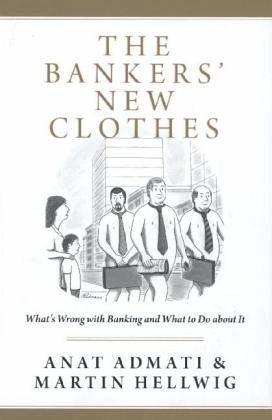
The Bankers' New Clothes: What's Wrong With Banking and What to Do About It
by
Anat Admati
and
Martin Hellwig
Published 15 Feb 2013
In September 2008, the bankruptcy of Lehman Brothers had a deadly impact on the Reserve Primary Fund, a money market mutual fund, which had lent almost $800 million to Lehman Brothers. As a mutual fund, it was funded by shares and thus was not threatened by insolvency. But when the losses on loans made to Lehman Brothers caused Reserve Primary to “break the buck”—that is, when the value of a share in the fund fell below one dollar—investors rapidly withdrew their money. Within days, Reserve Primary lost some $60 billion of its $62 billion in funds, and it was closed shortly afterward.9 At the time, investors in other money market funds, even those not directly affected by the Lehman bankruptcy, treated the fates of Lehman Brothers and Reserve Primary as a signal that other investment banks and money market funds might also be at risk.
…
By this logic, money market mutual funds that allow customers to participate in the payment process should be treated like banks. In particular, if money market mutual funds promise a stable net asset value, this promise should be treated as a liability and the shares as deposits. Legally, the promise might not be binding, but when a money market fund “breaks the buck”—that is, when the value of its shares falls below $1—its “depositors” are likely to run in just the same way as the depositors of a bank. Money market funds are not explicitly insured by the deposit insurance system. Sponsoring institutions routinely provide them with backing. In the Lehman crisis, however, money market funds suffered a panic anyway until the federal government provided them with the analog of deposit insurance.
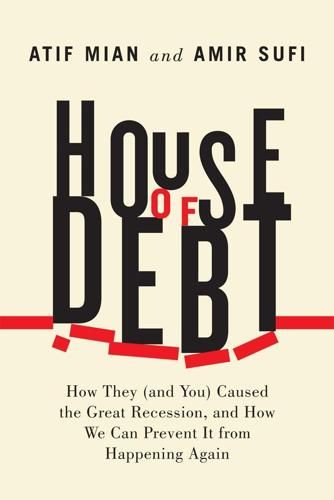
House of Debt: How They (And You) Caused the Great Recession, and How We Can Prevent It From Happening Again
by
Atif Mian
and
Amir Sufi
Published 11 May 2014
The answer is closely related to a phenomenon that Nicola Gennaioli, Andrei Shleifer, and Robert Vishny call “neglected risks.”11 They argue that certain unlikely events can materialize that are completely unexpected, because investors neglect the risks that they could happen. In the context of the housing crash, many investors may have neglected the risk of house prices falling more than 10 percent. During the financial crisis, people investing in money-market funds may have believed that no fund could ever “break the buck,” or pay back less than the nominal amount put in the account. Obviously, such neglect leads investors to make systematic mistakes and exercise poor economic decision-making. But Gennaioli, Shleifer, and Vishny show how the financial sector amplifies this neglect and produces a full-blown financial catastrophe.
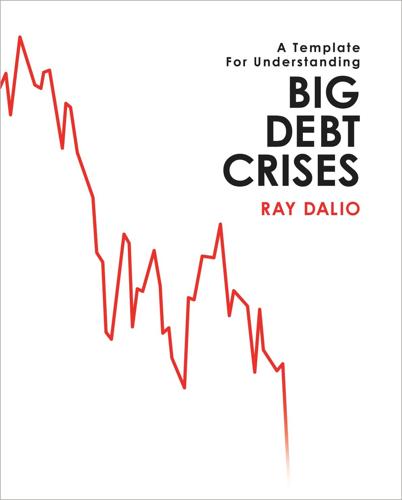
Big Debt Crises
by
Ray Dalio
Published 9 Sep 2018
The US also saw a squeeze in safe Treasury bills and higher yields on riskier commercial paper and interbank lending rates. Money market funds, the main holders of asset-backed commercial paper, saw hits to their asset values and required assistance from their sponsors, banks, and fund families in order to avoid “breaking the buck.” (By “breaking the buck” I mean falling in value below the amount deposited, which is something depositors assumed would never happen but did.) The unraveling could be seen in interbank markets. The following chart shows a classic measure of interbank stress, the TED spread, in which a higher number means banks are demanding a higher interest rate to compensate for the risks of lending to each other.
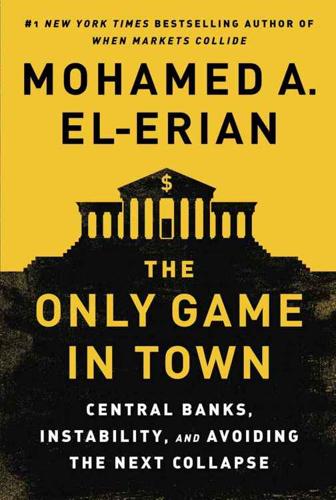
The Only Game in Town: Central Banks, Instability, and Avoiding the Next Collapse
by
Mohamed A. El-Erian
Published 26 Jan 2016
And those of us on trading floors with direct exposure to all this were stunned by the difficulties faced in completing the most basic financial transactions—those involving the placement of cash into the financial system and the exchange of highest-quality collateral. I remember particularly vividly the day when the instability spread to the U.S. money market segment, with one large fund being forced to “break the buck” (that is, it was unable to meet its client redemption requests at par). In fact, markets had become so dysfunctional that day that I called my wife during the later California afternoon and suggested that she go to the ATM and withdraw the maximum allowed for us per day ($500 I think it was).
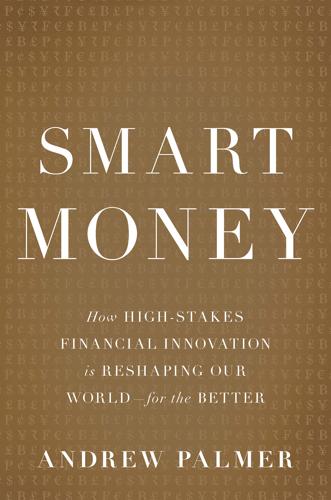
Smart Money: How High-Stakes Financial Innovation Is Reshaping Our WorldÑFor the Better
by
Andrew Palmer
Published 13 Apr 2015
Similarly, putting your money into a bank account is a decision that is informed by an explicit system of deposit insurance: you will get your money back because the government guarantees it. For many, investing in a money-market fund is also a bet on a promise, but this time by a private actor not to “break the buck”—in other words, to give a dollar back for each dollar invested. These new products may look like the old ones, in other words, but there are differences that investors do not fully appreciate. As a result, when those underappreciated risks do surface, they come as a shock to market participants and prompt panic.

Fool's Gold: How the Bold Dream of a Small Tribe at J.P. Morgan Was Corrupted by Wall Street Greed and Unleashed a Catastrophe
by
Gillian Tett
Published 11 May 2009
On September 16, the $62 billion Reserve Primary Fund, the country’s oldest money-market fund, posted a somber statement on its website: “The value of the debt securities issued by Lehman Brothers Holdings (face value $785 million) and held by the Primary Fund has been valued at zero effective as of 4:00 p.m. New York time today.” That threatened to spark more panic. America’s money-market fund industry had prided itself on never “breaking the buck,” and the Reserve had just done so. A run on the money-market funds now seemed likely. Meanwhile, as Steven Black and Vikram Pandit had anticipated, a crisis had been building at AIG. By the summer of 2008, AIG was holding around $560 billion in super-senior risk, such a gargantuan number and so little known outside the group that when some of the former J.P.
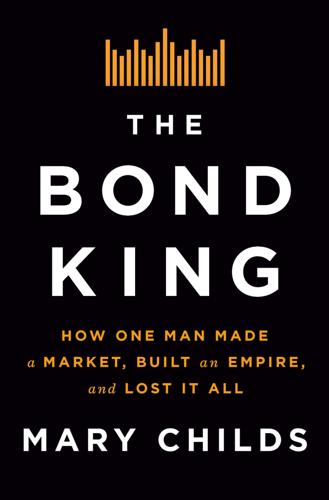
The Bond King: How One Man Made a Market, Built an Empire, and Lost It All
by
Mary Childs
Published 15 Mar 2022
That’s extraordinarily bad for any fund, but in a “money market fund,” it’s historic. In the $3.45 trillion money market industry, it’s supposed to be a law of nature that $1 will always equal $1; clients must be able to get their $1 out, at any time. If the value of the fund’s assets dips below $1 a share, which it never should, that’s called “breaking the buck.” When Lehman filed, the value of one Reserve Fund share fell to $0.97. It was the second buck ever broken. Investors rushed to pull their money from money market funds before the next guy could. In a matter of days, almost $200 billion evaporated. To stop the panic in money markets, the government stepped in, promising to back these types of funds.
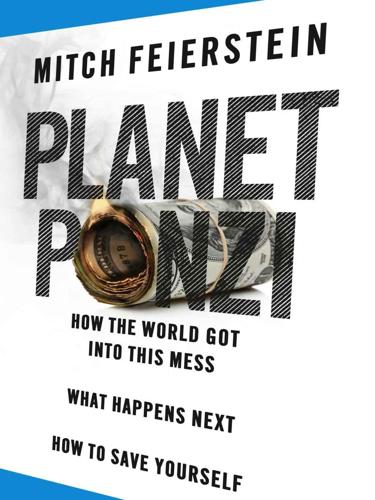
Planet Ponzi
by
Mitch Feierstein
Published 2 Feb 2012
That said, the first and biggest moral of this book is that you need to throw out all the assumptions you’ll have lived with to this point. Sovereign debt is no longer so safe you don’t have to think about it. (Truth is, it never was.) Banks might fail, including large ones. Money market funds may ‘break the buck’—that is, lose money. Equally, you need to shed some of your Ponzi-ish optimism. House prices have fallen, but they may fall further. Stock market prices have fallen, but they may fall further. Some bond prices have already collapsed, but they could collapse further. The dollar has collapsed against the yen (falling by a third, from $1 = ¥120 in 2007 to less than ¥80 at the time of writing).

The End of Wall Street
by
Roger Lowenstein
Published 15 Jan 2010
In other words, financial engineers had contrived to connect safety-minded moms and pops to the mad cow of the financial world—exactly the stuff of which systemic crises are made. As the value of SIV paper plunged, the money market funds themselves became imperiled. Roughly a dozen of them were on the verge of “breaking the buck”—that is, the net asset value of these funds was about to fall below the par value of $1 that investors had come to assume was guaranteed. The funds’ sponsors were left with little choice: either they made good the losses, or their own investors would lose money and probably sell, creating a liquidity crisis among money funds and possibly an all-out panic.
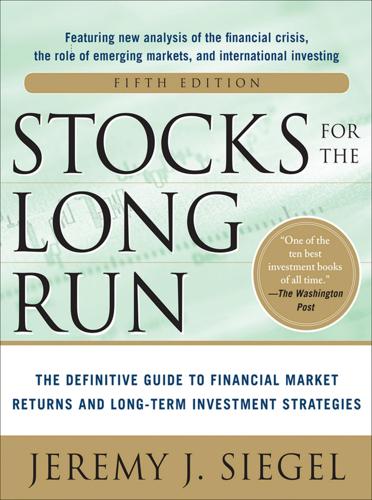
Stocks for the Long Run 5/E: the Definitive Guide to Financial Market Returns & Long-Term Investment Strategies
by
Jeremy Siegel
Published 7 Jan 2014
The Fed’s decision to bail out AIG was a dramatic turnaround, as Chairman Ben Bernanke had rejected the giant insurer’s request for a $40 billion loan just a week earlier. But the crisis was far from over. After the markets closed on Tuesday, the $36 billion Reserve Primary Money Market Fund made a most ominous announcement. Because the Lehman securities that the money fund held were marked down to zero, Reserve was going to “break the buck” and pay investors only 97 cents on the dollar.3 Although other money funds reassured investors that they held no Lehman debt and that they were honoring all withdrawals at full value, it was clear that these declarations would do little to calm investor anxiety. Bear Stearns had repeatedly reassured investors that everything was fine before the Fed forced the failing firm to merge into JPMorgan six months earlier.
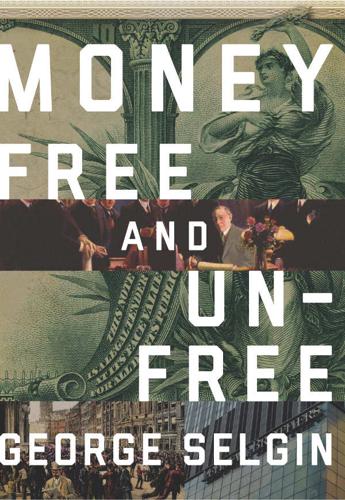
Money Free and Unfree
by
George A. Selgin
Published 14 Jun 2017
Wallison’s statement should be amended to allow for the fact that, on the Tuesday following Lehman’s Monday bankruptcy filing, the Reserve Primary money market mutual fund, having written off its large holdings of unsecured Lehman paper (and having lacked sponsors capable of making up for the loss), had to reduce its share price below the pledged $1 level to 97 cents. Reserve Primary’s “breaking the buck” led to several days of large redemptions from other (especially institutional) prime money market funds and, thereby, to a sharp drop in the demand for commercial paper. Significantly, government money market funds, including Treasury-only funds, experienced inflows; and it is possible that the redemptions would have subsided on their own as it became clear that most funds would remain able to meet all redemption requests at $1 per share.
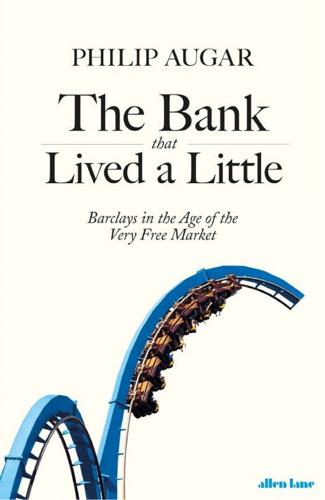
The Bank That Lived a Little: Barclays in the Age of the Very Free Market
by
Philip Augar
Published 4 Jul 2018
Morgan.9 Former Barclays director Steel organized a rescue of Wachovia by its former rival Wells Fargo. America had its Northern Rock moment when Reserve Primary, a cast-iron money market fund where risk-averse savers put their money, announced it could repay only 97 cents of each dollar, an event known as ‘breaking the buck’. The public suddenly realized what this meant for them and the US government rushed through an insurance scheme to prevent mass withdrawals. Iconic American financial institutions were falling like dominoes and the effects were felt instantly in the UK. Major British banks found it difficult to renew maturing debt for anything other than very short periods and the sterling Libor rate – the inter-bank lending rate – jumped from 5 to 6.8 per cent during the month.

A First-Class Catastrophe: The Road to Black Monday, the Worst Day in Wall Street History
by
Diana B. Henriques
Published 18 Sep 2017
Depositors at other banking giants would likely see a Continental failure as the signal to move their own funds to the safety of the Treasury market, putting other banks at risk. That, too, would spread the panic. These men might not have known it yet, but the reaction could reach even farther than they feared. David Taylor had lured back deposits from a number of money market funds over the past year, and if Continental failed, some of them might have to “break the buck”—that is, they might be unable to meet their implicit promise to always redeem their shares for a dollar. That would send the panic surging into the mutual fund industry, a market that these men did not regulate. A sudden exodus of cash from money market funds, regulated by the SEC, would have exacerbated the overall financial gridlock, because money market funds were becoming an important source of short-term credit for other banks and financial institutions, and even for some major corporations.
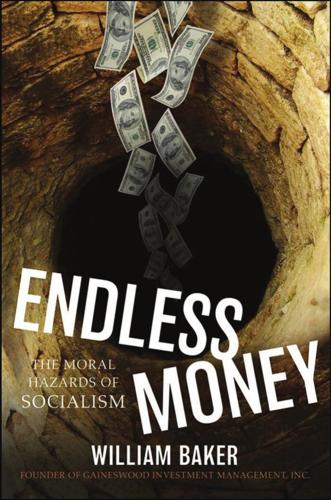
Endless Money: The Moral Hazards of Socialism
by
William Baker
and
Addison Wiggin
Published 2 Nov 2009
It not only transfers money from those who use it judiciously to those who are wanton, it orders holders of wealth to henceforth protect their capital by withdrawing it from countries that are stripping rationality from the investment market, to exchange it for gold, to short equities, and take other protective measures. What could be more damaging than creating the unpredictable circumstance where investors in short-term interestbearing funds cannot be certain whether these will break the buck as liquidity is withdrawn? Bloomberg Magazine authors Seth Lubove and Daniel Taub presciently depicted the regional corruption of credit in their portrayal of practices in southern California in an article titled “Subprime Fiasco Exposes Manipulation by Mortgage Brokers”dated May 30, 2007. They begin by relating the sudden transformation of a 27-year-old employee at Target, impressed by cars, girls, and cash being bandied about by Moral Hazard 149 his mortgage broker friend, who joins Secured Funding, one of several subprime originators based in California that collectively wrote 40 percent of the nation’s subprime loans for several years.
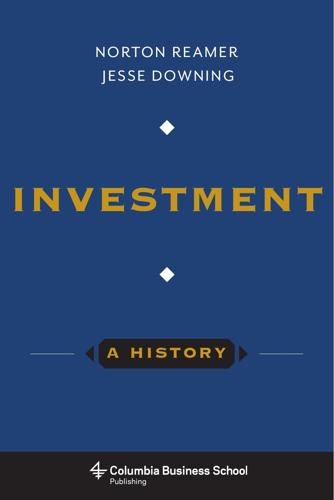
Investment: A History
by
Norton Reamer
and
Jesse Downing
Published 19 Feb 2016
The public became so disenchanted by the decline in many mutual funds that Business Week noted that the fund industry had “an image problem.”71 However, during this period, the first money market mutual fund, the Reserve Fund, was founded by Bruce Bent and Henry Brown.72 The goal of this vehicle was to take very little market risk and preserve capital while earning a small but steady return. Investors were attracted to these funds because of their circumvention of Regulation Q that otherwise capped the interest rates savings institutions could pay, which was a large problem during this inflationary period. The central mission of these funds was to generate returns while not “breaking the buck,” or having the net asset value decline below $1 per unit. Indeed, these funds rarely failed at their mission, with the exception of some funds during the financial crisis of 2007–2009, including, in fact, Bruce Bent’s own Primary Reserve fund, which had some exposure to Lehman debt. Mutual funds experienced vast asset growth in the 1990s because of three factors.

The Quiet Coup: Neoliberalism and the Looting of America
by
Mehrsa Baradaran
Published 7 May 2024
The Reserve Fund was a large money market fund that promised customers the safety of a bank deposit but with stock market returns—what was too good to be true was in fact not true. The fund had invested $785 million in short-term commercial paper loans to Lehman, which it lost, meaning that the firm could no longer promise investors dollar for dollar redemption. Each investor could recover only 97 cents—a phenomenon called “breaking the buck,” which set off a panic as anxious savers rushed to take their money out of all money market accounts. In other words, even a slight dip in the value of money market accounts caused an old-fashioned bank run, so destructive was the power of “fear itself.” Paulson immediately assured investors that the Treasury would make depositors whole with government money, which prevented the collapse of those money market accounts.
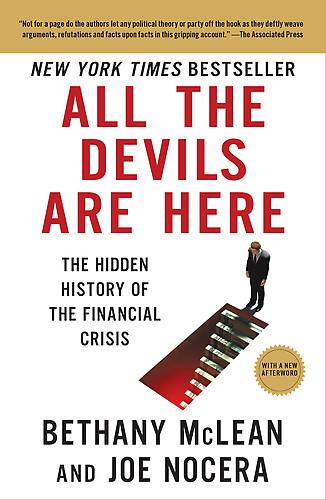
All the Devils Are Here
by
Bethany McLean
Published 19 Oct 2010
That loss was big enough that Merrill stayed away from taking significant risks in the mortgage business for years. A decade later, during the Long-Term Capital Management crisis, Merrill struggled to maintain its liquidity, fearing at one point that its biggest retail money market fund might “break the buck,” a potential disaster. (O’Neal had been Merrill’s chief financial officer during the LTCM crisis.) “Anytime a trader lost $50 million,” recalls a former Merrill trader, “it was like the Spanish Inquisition.” You couldn’t take big risks without accepting the possibility of big losses, and that was something that Merrill just couldn’t stomach.
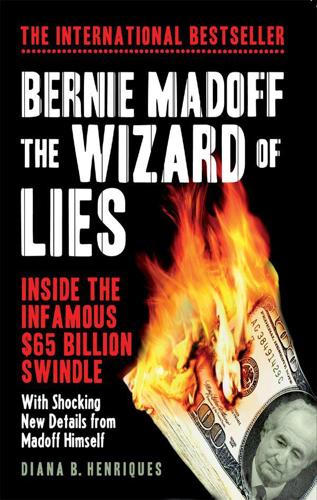
Bernie Madoff, the Wizard of Lies: Inside the Infamous $65 Billion Swindle
by
Diana B. Henriques
Published 1 Aug 2011
The overall market was down a stunning 5 percent yesterday as regulators grappled with whether, and how, to rescue AIG, which was on the brink of defaulting on its derivative-based obligations to other giant institutional investors around the world. The Treasury announced a rescue package for AIG this morning, but unexpected cracks from the impact of Lehman Brothers’ collapse are showing up elsewhere. Today, The Reserve fund, the nation’s oldest money market fund, “breaks the buck” by reporting a net asset value of less than a dollar a share. The news feeds the growing panic. If this financial crisis can infect even supposedly secure money funds, for decades the middle-class substitute for a bank account, there is no safe haven. At Fairfield Greenwich Group, whose wealthy investors have long thought of Madoff as a sort of plutocratic money market fund, clients are seeking clarity and comfort.

Manias, Panics and Crashes: A History of Financial Crises, Sixth Edition
by
Kindleberger, Charles P.
and
Robert Z., Aliber
Published 9 Aug 2011
In the early 1990s, the estimates were that the losses to the US taxpayers would amount to $150 billion but the increase in the US growth rate meant that the RTC received more money than anticipated from the sale of collateral and bad loans so the losses totaled a bit more than $100 billion.61 There was some question whether a portion of this cost to the taxpayers could be reduced by increasing the insurance premiums on bank deposits – a suggestion resoundingly opposed by sound banks.62 During the 2008 crisis the US government extended deposit insurance to the money market funds; the fear was that otherwise the owners of these funds would transfer their money to banks whose deposits were guaranteed by the FDIC. The money market funds then would be obliged to sell assets, and the rapid sale of assets would depress their prices. Some money market funds then would ‘break the buck’; the net asset value per share would decline below $1.00 – which would trigger a massive, self-justifying run. Exchequer bills One ancient device short of lending money to a firm in trouble was to issue marketable securities to the firm against appropriate collateral. (Of course, when markets break down, even the most liquid securities may not be sold readily.)

Adaptive Markets: Financial Evolution at the Speed of Thought
by
Andrew W. Lo
Published 3 Apr 2017
The interbank lending system began to freeze up; banks found it harder and harder to borrow from each other, because no one knew for sure whether a counterparty would still be solvent the following week. Once Lehman Brothers declared bankruptcy on September 15, 2008, the bonds issued by this venerable 158-year-old investment bank became nearly worthless. The next day, the Reserve Primary Fund, a money market fund with about $65 billion in assets, announced that they were “breaking the buck”—shares in their fund that were supposed to be valued at $1.00 were now worth 97 cents. Many customers treat their money market funds like a bank’s checking account; what would you do if your bank told you that the assets in your checking account just lost 3 percent in value overnight? The difference is that the Federal Deposit Insurance Corporation (FDIC) insures the assets in your checking account up to $100,000, while money market funds were not insured at that time (now they are).
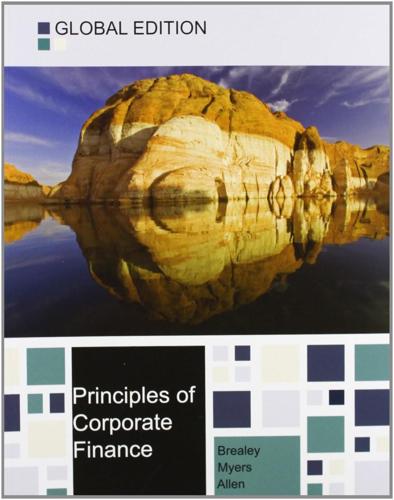
Principles of Corporate Finance
by
Richard A. Brealey
,
Stewart C. Myers
and
Franklin Allen
Published 15 Feb 2014
The impact of reductions in lending on the investor’s balance sheet and risk position is exactly the same as increases in borrowing. 8Money-market funds are not totally safe. In 2008 the Reserve Primary Fund incurred heavy losses on its holdings of Lehman Brothers debt and became only the second money-market fund in history to “break the buck” by paying investors only 97 cents on the dollar. 9So far security designs cannot be patented, but other financial applications have received patent protection. See J. Lerner, “Where Does State Street Lead? A First Look at Finance Patents,” Journal of Finance 57 (April 2002), pp. 901–930. Part 5 Payout Policy and Capital Structure How Much Should a Corporation Borrow?
…
During the credit crunch of 2008 fund assets mushroomed as investors fled from plunging stock markets. Then it was revealed that one fund, the Reserve Primary Fund, had incurred heavy losses on its holdings of Lehman Brothers’ commercial paper. The fund became only the second money-market fund in history to “break the buck,” by offering just 97 cents on the dollar to investors who cashed in their holdings. That week investors pulled nearly $200 billion out of money-market funds, prompting the government to offer emergency insurance to investors. Calculating the Yield on Money-Market Investments Many money-market investments are pure discount securities.
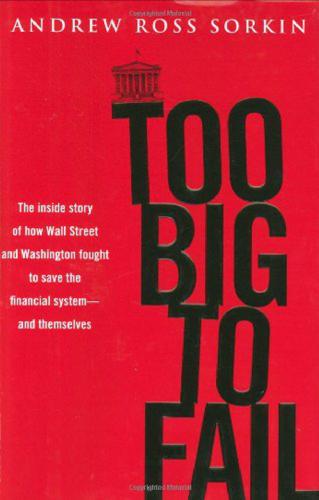
Too big to fail: the inside story of how Wall Street and Washington fought to save the financial system from crisis--and themselves
by
Andrew Ross Sorkin
Published 15 Oct 2009
Joe Hagan, “The Most Powerless Powerful Man on Wall Street,” New York, March 9, 2009. With $62.6 billion in assets: On Friday, September 12, 2008, the Primary Fund’s assets had been about $62 billion. Diya Gullapalli, Shefali Anand, and Daisy Maxey, “Money Fund, Hurt by Debt Tied to Lehman, Breaks the Buck,” Wall Street Journal, September 17, 2008. “They pretended they were drawing a line in the sand”: Nouriel Roubini, quoted in Emily Kaiser, “After AIG Rescue, Fed May Find More at Its Door,” Reuters, September 17, 2008. Wachovia’s 2006 acquisition of Golden West: On May 7, 2006, Wachovia announced plans to purchase Golden West Financial Corp., based in Oakland, California, for $25.5 billion.
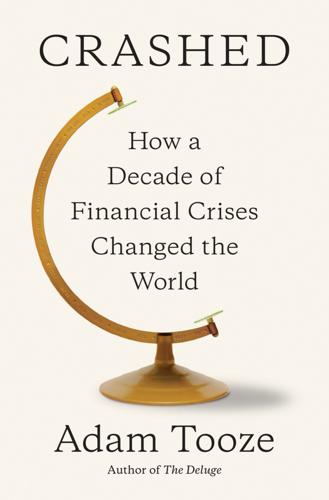
Crashed: How a Decade of Financial Crises Changed the World
by
Adam Tooze
Published 31 Jul 2018
On September 10, ahead of the Lehman failure, MMF collectively administered $3.58 trillion in savings and cash resources for individuals, pension funds and other investors.25 An essential part of their appeal was that while they offered better returns than ordinary savings accounts, they also promised that the principal invested was safe. They would return a dollar on the dollar whatever happened. The day after Lehman, on September 16, that illusion burst. The Reserve Primary Fund, one of the oldest and most respected in the business, with more than $62 billion under management, alerted the Fed that it was about to “break the buck.” It could no longer guarantee a payout of one dollar for every dollar invested. In August 2007 the Reserve Primary Fund had been under intense competitive pressure. To improve its yield and attract more investors it had committed 60 percent of its funds to buying ABCP just as other investors pulled out.26 The high yields on offer from desperate borrowers catapulted the fund from the bottom 20 percent to the top 10 percent in the performance league and doubled its assets under management in a single year.